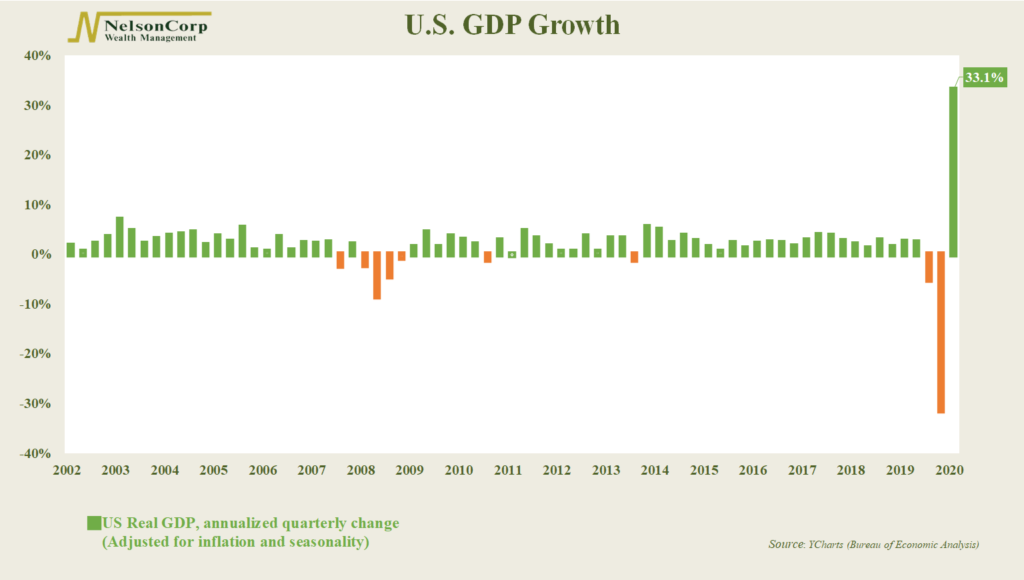
The Covid-19 pandemic has done a number on quite a few economic charts this year. GDP is its latest victim.
GDP—Gross Domestic Product—is simply the market value of all goods and services produced in a country over a specific period. It is a crude but useful measure of a country’s economic health.
After a record decline of 31.4% annualized in the second quarter, GDP rebounded at an annualized 33.1% rate in the third quarter.
These swings look huge. By comparison, the largest annualized quarterly drop in GDP during the 2008 financial crisis was just 8.4%. The largest gain during the subsequent recovery was about 5.5%.
But these annualized numbers can be misleading. They indicate how much an economy would shrink or expand if that quarterly rate were sustained for an entire year. With these recent numbers, this is highly unlikely to be the case.
If we look at the percentage change from the previous quarter (not annualized), we see that GDP fell about 1.3% in the first quarter, 9% in the second quarter, and then rebounded 7.4% in the third.
Put another way, the U.S. economy has recovered about two-thirds of what it lost earlier this year. GDP fell about $1.95 trillion during the first two quarters of the year and has since recovered about $1.28 trillion of that loss.
This is intended for informational purposes only and should not be used as the primary basis for an investment decision. Consult an advisor for your personal situation.
Indices mentioned are unmanaged, do not incur fees, and cannot be invested into directly.
Past performance does not guarantee future results.
